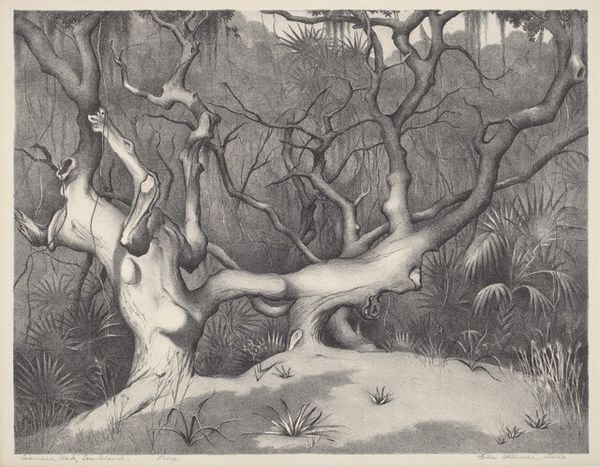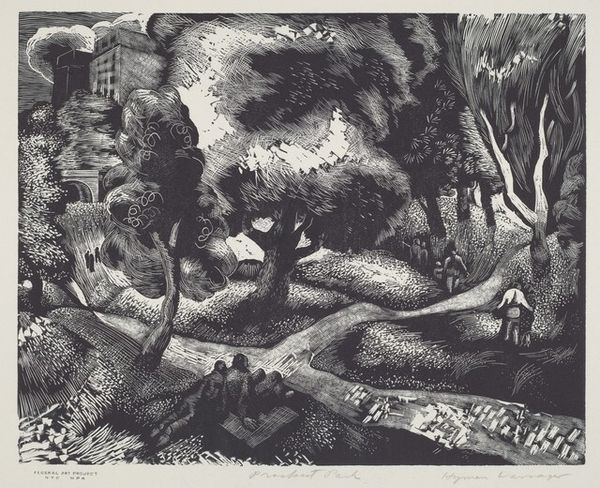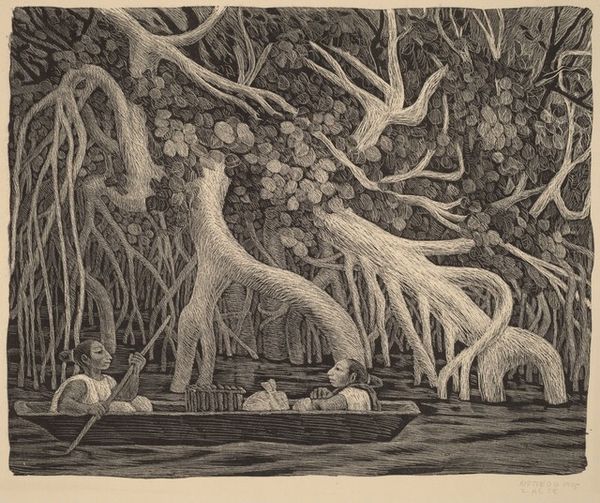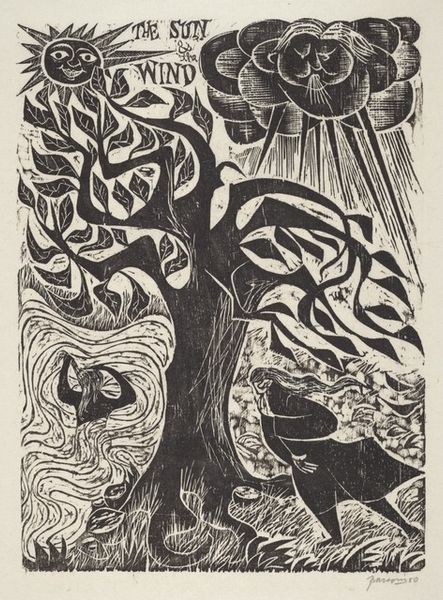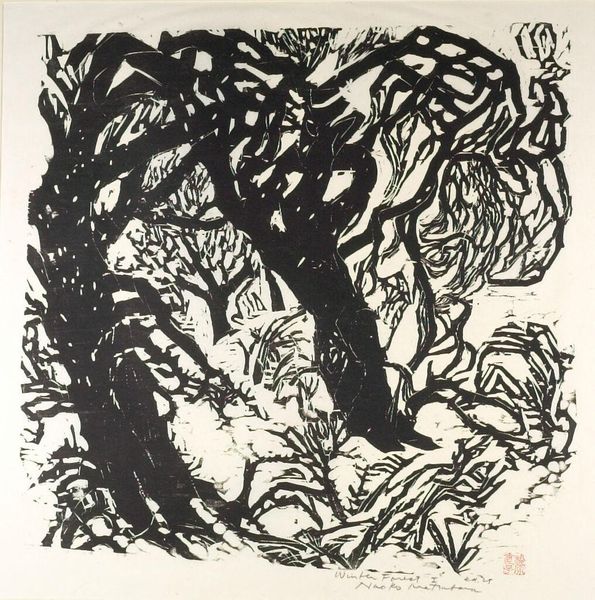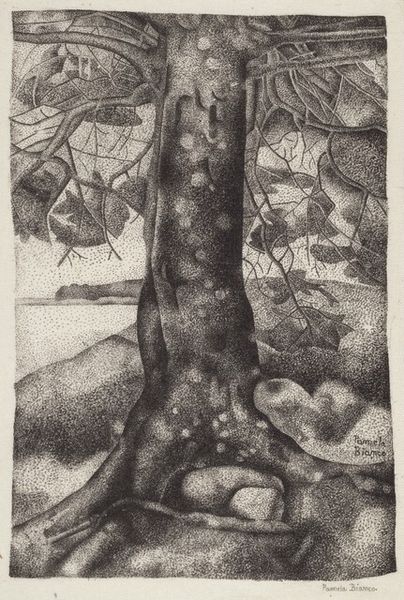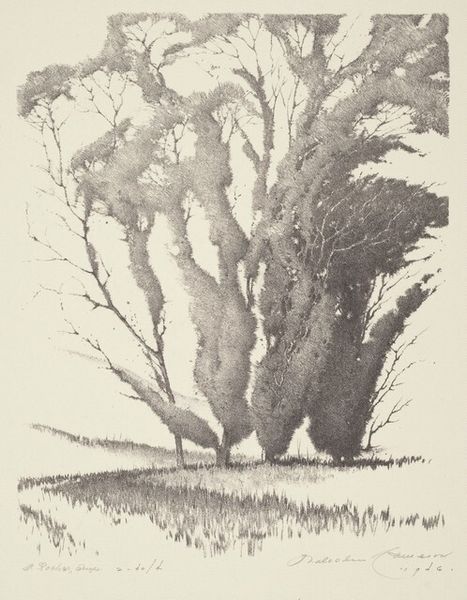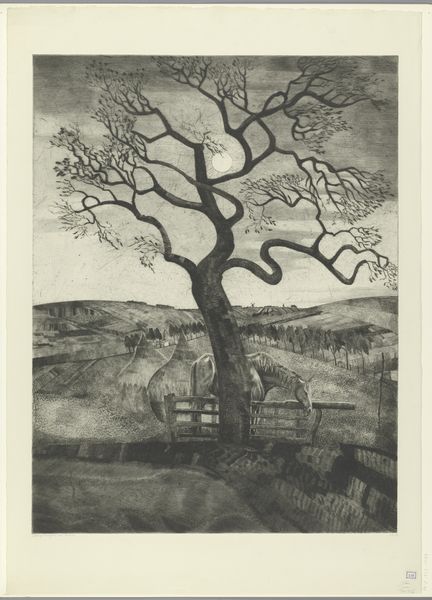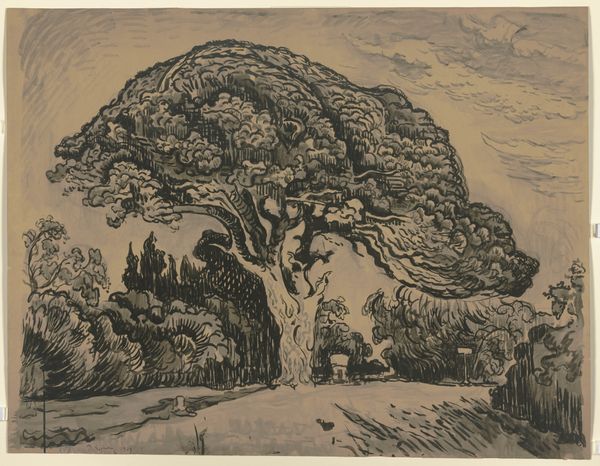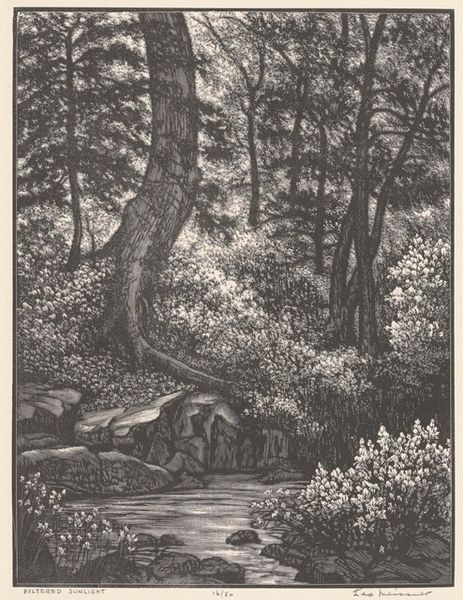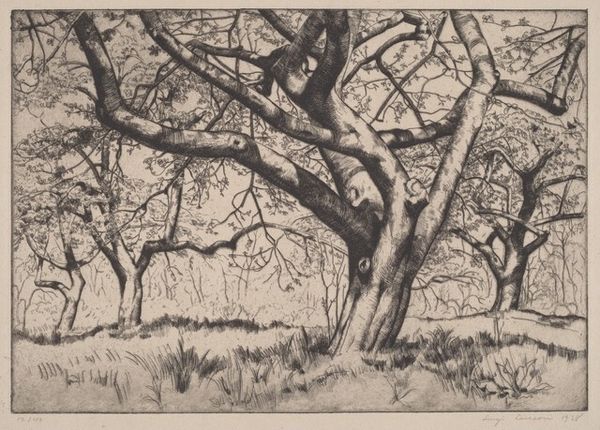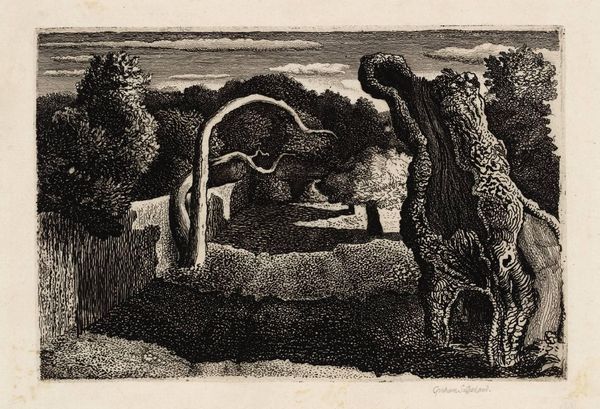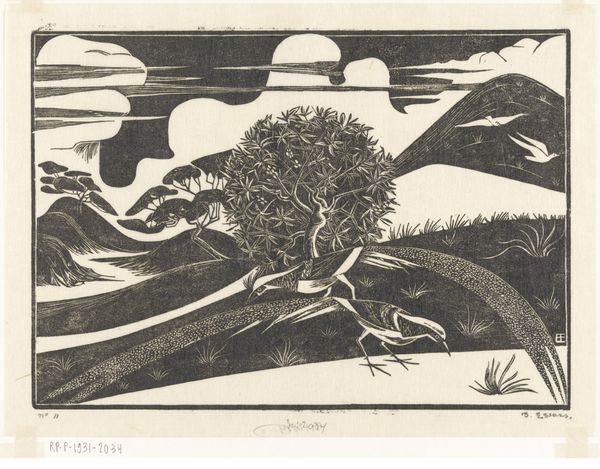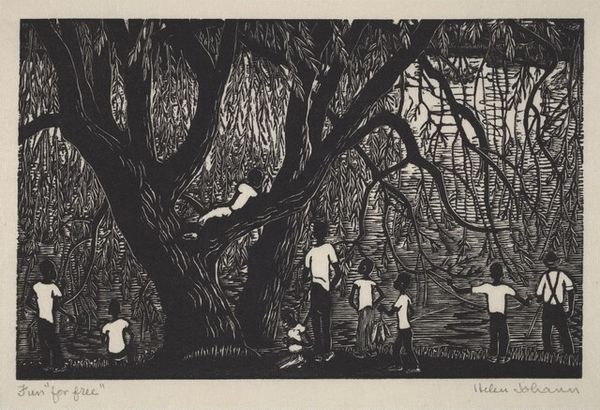
drawing, print, graphite
#
drawing
# print
#
landscape
#
graphite
#
realism
Dimensions: image: 22.38 × 34.93 cm (8 13/16 × 13 3/4 in.) sheet: 30.48 × 40.64 cm (12 × 16 in.)
Copyright: National Gallery of Art: CC0 1.0
Curator: What strikes you first about this drawing, "Indian Laurels" by Alan Horton Crane, made in 1948? It's a graphite print. Editor: A sense of deep quietude, and maybe even melancholy. The greyscale palette certainly contributes, and that sharp detail! I also find something fascinatingly strange in the subject matter of these sprawling tree roots. Curator: Crane, primarily a painter, often worked with landscapes. Considering this print, do you feel the rendering of these trees tells us something more? Editor: Definitely. This composition isn't just about representing trees, it’s also about the earth and where they originate. And it asks a deeper question about our rootedness within our own lands, wherever those might be. Also, note that most depictions of “laurels” use their leaves only; here Crane is pointing at the origins. Is he advocating for us to celebrate not the result, but the means to it? Curator: An interesting observation, connecting laurel wreaths traditionally awarded as a sign of honor with Crane’s interest in the Indian independence movement. But tell me more: the laurels are also very old… Editor: Absolutely! One is prompted to wonder: what have these trees silently witnessed over time? And moreover, who occupies, or is being displaced, in the area surrounding them, marked here as "Indian" laurels? One wonders if these natural markers may serve to question whose historical perspective takes precedent, not just politically, but as stewards of land in general. Curator: You highlight such significant points regarding whose narratives take precedence! The political undertones of a seemingly serene landscape prompt us to ask important questions, considering who historically has had a voice within such "natural" landscapes. It’s amazing how a grayscale palette can evoke so much complexity. Editor: It really is. It just shows how a commitment to craft can provide an amazing space for nuanced interpretations, beyond just something decorative.
Comments
No comments
Be the first to comment and join the conversation on the ultimate creative platform.
